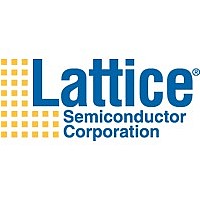M4A3-256/128-10YC Lattice, M4A3-256/128-10YC Datasheet - Page 9

M4A3-256/128-10YC
Manufacturer Part Number
M4A3-256/128-10YC
Description
Manufacturer
Lattice
Datasheets
1.M4A3-256128-10YC.pdf
(62 pages)
2.M4A3-256128-10YC.pdf
(62 pages)
3.M4A3-256128-10YC.pdf
(62 pages)
Available stocks
Company
Part Number
Manufacturer
Quantity
Price
Company:
Part Number:
M4A3-256/128-10YC
Manufacturer:
LATTICE
Quantity:
368
Company:
Part Number:
M4A3-256/128-10YC
Manufacturer:
Lattice Semiconductor Corporation
Quantity:
10 000
a. Basic cluster with XOR
b. Extended cluster, active high
c. Extended cluster, active low
0
d. Basic cluster routed away;
e. Extended cluster routed away
single-product-term, active high
17466G-007
Figure 3. Logic Allocator Configurations: Synchronous Mode
a. Basic cluster with XOR
b. Extended cluster, active high
c. Extended cluster, active low
0
d. Basic cluster routed away;
e. Extended cluster routed away
single-product-term, active high
17466G-008
Figure 4. Logic Allocator Configurations: Asynchronous Mode
Note that the configuration of the logic allocator has absolutely no impact on the speed of the
signal. All configurations have the same delay. This means that designers do not have to decide
between optimizing resources or speed; both can be optimized.
If not used in the cluster, the extra product term can act in conjunction with the basic cluster to
provide XOR logic for such functions as data comparison, or it can work with the D-,T-type flip-
flop to provide for J-K, and S-R register operation. In addition, if the basic cluster is routed to
another macrocell, the extra product term is still available for logic. In this case, the first XOR
input will be a logic 0. This circuit has the flexibility to route product terms elsewhere without
giving up the use of the macrocell.
Product term clusters do not “wrap” around a PAL block. This means that the macrocells at the
ends of the block have fewer product terms available.
ispMACH 4A Family
9












